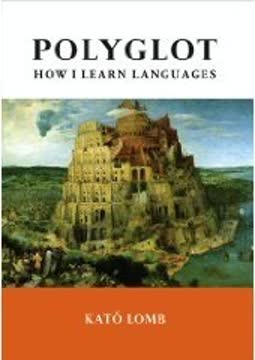Key Takeaways
1. Motivation and Mindset are Paramount
Solely in the world of languages is the amateur of value.
Interest drives success. Kató Lomb firmly believed that genuine interest, motivation, perseverance, and diligence are far more crucial to language learning success than any vague concept of "innate ability." She aimed to demystify language learning, removing the heroic status often associated with it, and instead presented it as an accessible and rewarding intellectual pursuit for anyone. Her own journey, starting language acquisition relatively late in life (in her 30s and 40s), serves as a testament to this principle.
Embrace imperfection. Lomb championed the idea that knowing a language "even poorly" is valuable. Unlike other skills where amateurism might be ridiculed (e.g., a bad violinist or chemist), even broken sentences in a foreign language can build bridges between people and achieve practical goals. This magnanimous perspective encourages learners to overcome the fear of making mistakes, which she identifies as a significant inhibition.
Joyful pursuit. Connecting language learning with work or leisure, rather than seeing it as a separate, burdensome task, is key. Lomb suggests integrating it into daily life, such as reading technical papers in a foreign language for professional development or enjoying foreign films. This approach transforms learning into an inexhaustible source of joy, making the process inherently motivating and sustainable.
2. Embrace Active Reading as Your Primary Tool
We should read because it is books that provide knowledge in the most interesting way, and it is a fundamental truth of human nature to seek the pleasant and avoid the unpleasant.
Books are unrivaled. Lomb passionately advocated for reading as the "utmost means of retaining existing knowledge and obtaining new knowledge." She stressed that books are always available, can be revisited repeatedly, and allow learners to progress at their own pace. This makes them superior to fleeting conversations or rigid classroom schedules, especially for self-directed adult learners.
Active engagement. Her method emphasizes active reading, which means not just passively consuming text but interacting with it. This involves:
- Reading with initial "blitheness," focusing on overall comprehension rather than looking up every unknown word.
- Writing notes, underlines, and questions in the margins to personalize the learning experience.
- Figuring out meanings from context, which creates a deeper, more lasting impression than automatic dictionary consultation.
Personalized content. The choice of reading material is critical: it must be genuinely interesting to the learner. Whether it's catalogs for stamp collectors, sports pages for enthusiasts, romance novels, or detective stories, personal interest acts as a powerful motivator to push through linguistic deadlocks. This approach ensures that learning remains enjoyable and relevant, fostering sustained engagement.
3. Learn Grammar from Language, Not Rules First
Man lernt Grammatik aus der Sprache, nicht Sprache aus der Grammatik.
Grammar from immersion. Lomb strongly endorsed the late 19th-century revolutionary idea that "one learns grammar from language, not language from grammar." She argued against the traditional method of cramming grammar rules and memorizing word lists, finding it tedious and largely ineffective. Instead, she believed that ordinary books, when read actively, serve as the most reliable "course books" for internalizing grammatical patterns.
Patterns over rules. She likened grammatical structures to "shoemaker's lasts" or "tuning forks"—patterns that, once internalized, allow learners to generate new, correct forms automatically. The goal is for grammar rules to become second nature, like obeying a red traffic light without conscious deliberation. This automaticity is achieved through frequent exposure to correct forms in meaningful contexts.
Conscious realization. While advocating for learning grammar through language, Lomb acknowledged the adult mind's need for "why." She encouraged learners to consciously identify and elaborate on rules they discover themselves, as this self-effort creates a deeper, more lasting understanding and a sense of achievement. This approach combines the benefits of intuitive acquisition with logical comprehension, making learning more robust.
4. Acquire Vocabulary in Context, Not in Isolation
The word or name to be memorized should never be left floating in the void but should be associated with another, already-known term or concept.
Context is king. Lomb stressed that words cannot be understood or learned in isolation; they must be encountered and memorized within their "context"—the surrounding text, situation, or associated concepts. Learning words from simple glossaries, where only one mother-tongue equivalent is given, deprives the word of its rich "Hintergrund" (background) and multiple meanings, leading to shallow understanding and easy forgetting.
Personalized glossaries. She recommended creating "untidy glossaries" where words are recorded in the context they appeared, along with synonyms or antonyms. This personal compilation, using different writing instruments and styles, creates strong associative links in memory. The act of figuring out a word's meaning from context and then recording it provides a "sense of achievement" that reinforces learning.
Mnemonics and associations. To combat forgetting, Lomb advocated for mnemonics—the art of putting terms into artificial contexts or associating them with existing knowledge. This can be lexical, semantic, or phonetic. While acknowledging the potential for "false friends" (words that look or sound similar but have different meanings), she believed that conscious association is vital for fixing new vocabulary in memory, especially for abstract terms or those with symbolic actions.
5. Practice Consciously and Actively, Especially Through Monologues
If I talk with myself, I am relieved that my partner will not be indignant at long hesitations, grammatical agreements difficult to manage, and vocabulary gaps completed in the mother tongue.
Monologues are invaluable. Lomb was a fervent advocate for "autologue"—silent monologues in the target language. This self-practice method offers a safe, non-judgmental space to experiment with new vocabulary and grammatical structures without the pressure of a conversation partner. It allows learners to overcome inhibitions, consolidate knowledge, and maintain linguistic engagement even when alone.
Conscious engagement. Whether listening to the radio, watching TV, or observing foreign speakers, Lomb emphasized the importance of "conscious activity." This means actively discerning sounds, comparing them to one's native tongue, and identifying pronunciation rules. She recommended "phonetic drills" using nonsense words to practice difficult sounds and mouth positions, often in front of a mirror.
Repetition is fundamental. Lomb considered repetition an "essential element of language learning," akin to a knife for a lathe or fuel for an engine. Books provide an unlimited source for this, allowing learners to revisit texts and phrases repeatedly without ordeal. Taping and replaying foreign language broadcasts also offers opportunities for focused repetition, particularly for improving pronunciation and intonation.
6. Age is Not a Barrier; Adapt Your Learning Style
The second false assumption about age and language learning is that “you can but forget in old age, not learn anymore.” It would be sad if that were the case.
Debunking age myths. Lomb challenged the common belief that children are inherently superior language learners and that older adults cannot learn effectively. She argued that while children acquire language automatically and intuitively, adults learn logically, leveraging their existing intellectual framework. The "slow pace" of a child's acquisition, taking years to master their first language, often goes unacknowledged.
Adult advantages. Adults possess a rich intellectual and emotional world, a developed "second signal system" (linguistic form), and a logical mind that seeks reasons and patterns. This allows them to use grammar as a "catalyst" and to make conscious comparisons between languages, which can accelerate learning. The "years of retirement" offer a unique opportunity for self-directed, interest-driven study, free from the pressures of youth.
Overcoming inhibitions. While older learners might face challenges with pronunciation (which is best acquired before age 12-14) and name recall, these can be mitigated. Lomb suggested associating names/words with something personal and using "launching expressions" to overcome hesitations in speaking. She noted that women, generally, have a stronger desire to communicate and fewer inhibitions, making them often more facile learners.
7. Utilize Dictionaries and Tailored Textbooks Wisely
A dictionary is a long-term means to quench your thirst for knowledge. It deserves a couple of thoughts for the thousands of words accumulated in it.
Dictionaries: keys, not crutches. Lomb viewed dictionaries as "excellent keys" to unlock a language, inspiring thought and aiding in the acquisition of new alphabets. She encouraged learners to buy, leaf through, and "dog-ear" their dictionaries, especially for "hieroglyphic" languages like Chinese or Japanese, to quickly grasp letter-sound relationships through international words.
Avoid over-reliance. However, she cautioned against abusing dictionaries. While initially inspiring, they can later "positively make you stop" thinking, luring learners into laziness by providing easy answers instead of encouraging brainwork. She recommended a "smart" approach: if a word is elusive, try to recall vague scraps from memory and then confirm it in a reverse (target-to-source) dictionary, which reinforces memory more effectively.
Tailored textbooks. Lomb emphasized the importance of using textbooks prepared by authors who share the learner's native language. This is not chauvinism, but a recognition that each nation faces "specific difficulties" when learning a foreign language. Textbooks designed for native speakers of the target language, or those from other linguistic backgrounds, often overemphasize or neglect points that are either self-evident or uniquely challenging for a particular learner group.
8. Converse Strategically: Compromise and Circumlocution
Speaking a foreign language always means a compromise, Kosztolányi said.
Compromise is inevitable. When speaking a foreign language, especially in the early stages, Lomb advised accepting that communication often involves compromise. The goal is to convey your message effectively, even if it means not using the perfect word or grammatical structure. This pragmatic approach helps overcome the fear of making mistakes and encourages continuous speaking practice.
Strategic communication tools:
- Word pairs: Learning verbs with their common objects (e.g., "an obstacle is overcome," "a duty is fulfilled") helps recall and construct natural phrases.
- Synonyms and antonyms: If the exact word escapes you, using a similar word or its opposite (e.g., "not cowardly" instead of "brave") can maintain the flow of conversation.
- Circumlocution: Describing a concept when the specific word is forgotten (e.g., "the humble little flower that is revealed by its scent from far away" for "violet") is a poetic and effective last resort.
Beware of false friends. Lomb highlighted the danger of "false friends"—words that look or sound similar across languages but have different meanings (e.g., Spanish "burro" for donkey vs. Italian "burro" for butter). These can lead to embarrassing or even serious misunderstandings, underscoring the need for careful contextual learning and not relying solely on superficial similarities.
9. Interpreting: The Pinnacle of Language Mastery and Mental Agility
Simultaneous interpreting is one of the most modern and intellectually interesting professions.
A demanding art. Lomb considered interpreting, especially simultaneous interpreting, to be the highest level of foreign language achievement. It demands an extraordinary combination of skills: lightning-fast association of ideas, imperturbable calmness, a robust nervous system, and a never-ceasing readiness to study diverse subjects. Interpreters essentially take "exams 30-40 times a year" on disparate topics.
Unique challenges. Simultaneous interpreting presents inherent difficulties not found in other language tasks. Interpreters must process semi-finished sentences, often guessing the speaker's intent before the key word is uttered (e.g., the "nicht" in a German sentence appearing at the very end). This requires the intellect to constantly "break out of the sphere of the source language" and revolve in the orbit of the target language, switching between linguistic matrices in split seconds.
Beyond language. The profession requires more than just linguistic fluency; it demands deep technical, economic, and scientific knowledge across various fields. Interpreters often serve as cultural ambassadors, bridging not just linguistic but also conceptual and cultural gaps. Lomb's anecdotes, from translating "crab" as "roux soup" to navigating the nuances of "sexing" chicks, illustrate the constant need for cultural sensitivity and quick, creative problem-solving under immense pressure.
10. The Ten Requests: A Practical Guide to Accelerated Language Learning
Be firmly convinced that you are a linguistic genius. If the facts demonstrate otherwise, heap blame on the pesky language you aim to master, on the dictionaries, or on this book, not on yourself.
Daily engagement. Lomb's "Ten Requests" offer a concise, actionable framework for effective language learning. The first emphasizes daily engagement, even if only for a 10-minute monologue, particularly in the morning. This consistent, small effort builds momentum and keeps the language active in the mind.
Strategic learning habits:
- Flexibility: Switch study methods when enthusiasm wanes (e.g., radio instead of reading).
- Contextual learning: Always learn words and grammar in context, not in isolation.
- Active note-taking: Write phrases in margins for later use as "prefabricated elements."
- Mental exercises: Engage in quick, impromptu translations of everyday observations for amusement.
- Corrected material only: Memorize only what has been corrected to avoid ingraining mistakes.
- First-person idioms: Learn idiomatic expressions in the first person singular for easier recall and natural usage.
- Multi-pronged attack: "Besiege" the language from all directions (newspapers, radio, movies, textbooks, native speakers).
Embrace speaking and self-belief. Lomb's ninth request encourages speaking without fear of mistakes, while also asking for correction (and not getting peeved when it happens). The tenth, and perhaps most empowering, is to maintain an unwavering belief in one's own "linguistic genius," shifting blame to external factors if progress seems slow. This positive self-talk is crucial for maintaining motivation and resilience throughout the learning journey.
Last updated:
Review Summary
Polyglot by Kató Lomb receives mixed reviews. Many readers find it inspiring and full of valuable insights on language learning, praising Lomb's emphasis on reading and self-study. They appreciate her personal anecdotes and practical advice. However, some criticize the book's structure, outdated views, and lack of scientific backing. Several reviewers note that the book doesn't deliver on its title's promise of a comprehensive language learning guide. Despite its flaws, many still recommend it as an interesting read for language enthusiasts and aspiring polyglots.
Similar Books

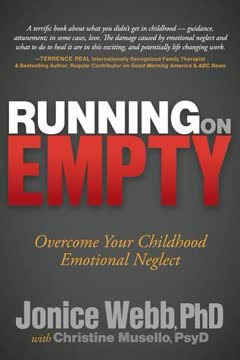
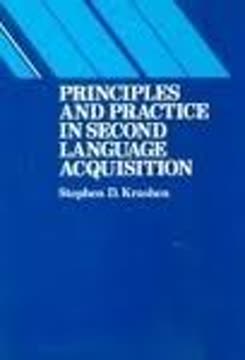
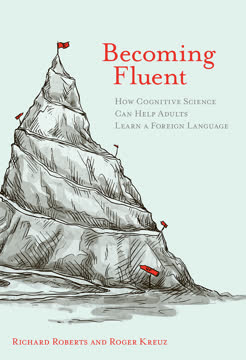


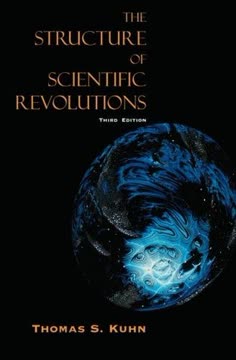

Download PDF
Download EPUB
.epub digital book format is ideal for reading ebooks on phones, tablets, and e-readers.
